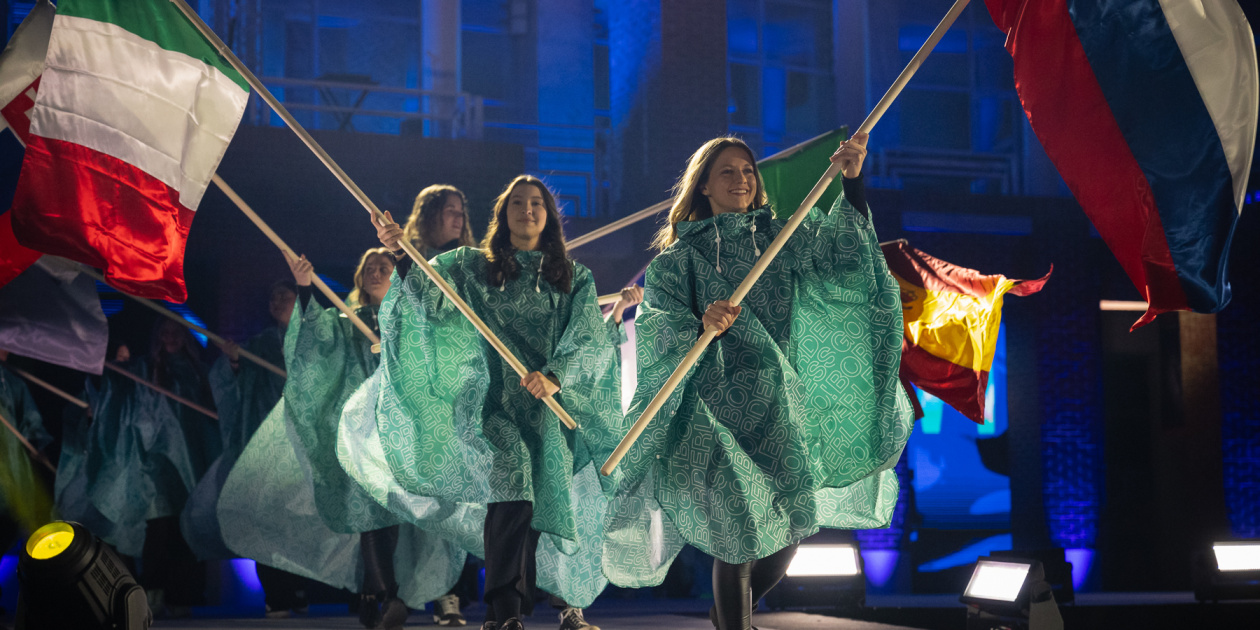Última actualización Sábado, 12/04/2025
Have you ever seen a border dissolve before your eyes? Not on a map, but in real life on streets that reconnect, in hearts that draw close again after years of separation?
Have you ever felt the thrill of witnessing history unfold, of division turning into unity, of memory ceasing to be just a recollection and becoming the future? On February 8 2025, something extraordinary happened between Gorizia (Italy) and Nova Gorica (Slovenia). Two cities, two nations, one heartbeat.
For too long, a border had split in two what fate had created as one. A border drawn by politics, imposed by war an invisible scar that separated friends, families, and generations. But culture achieved what history could not: it erased that line, restoring to people the sense of belonging to a single community.
GO!2025 was not just an event; it was a new beginning, a declaration of intent … a cry of hope. But what is GO!2025 GO!2025 is the acronym for the European Capital of Culture 2025, a title shared for the first time by two cities from different countries: Nova Gorica (Slovenia) and Gorizia (Italy). The project symbolises cross-border cooperation and cultural unity, aiming to overcome physical and mental boundaries through art, history, and sustainability.
Piazza Transalpina, the symbolic heart of both separation and unity between Italy and Slovenia, transformed into a stage of emotions. Thousands of people stood together, no longer divided by an invisible frontier but united by the desire to share a new chapter of their history. Where once a barrier stood, today a bridge is celebrated. A bridge built of art, music, words, and dreams. A bridge that connects not just two cities but all of Europe.
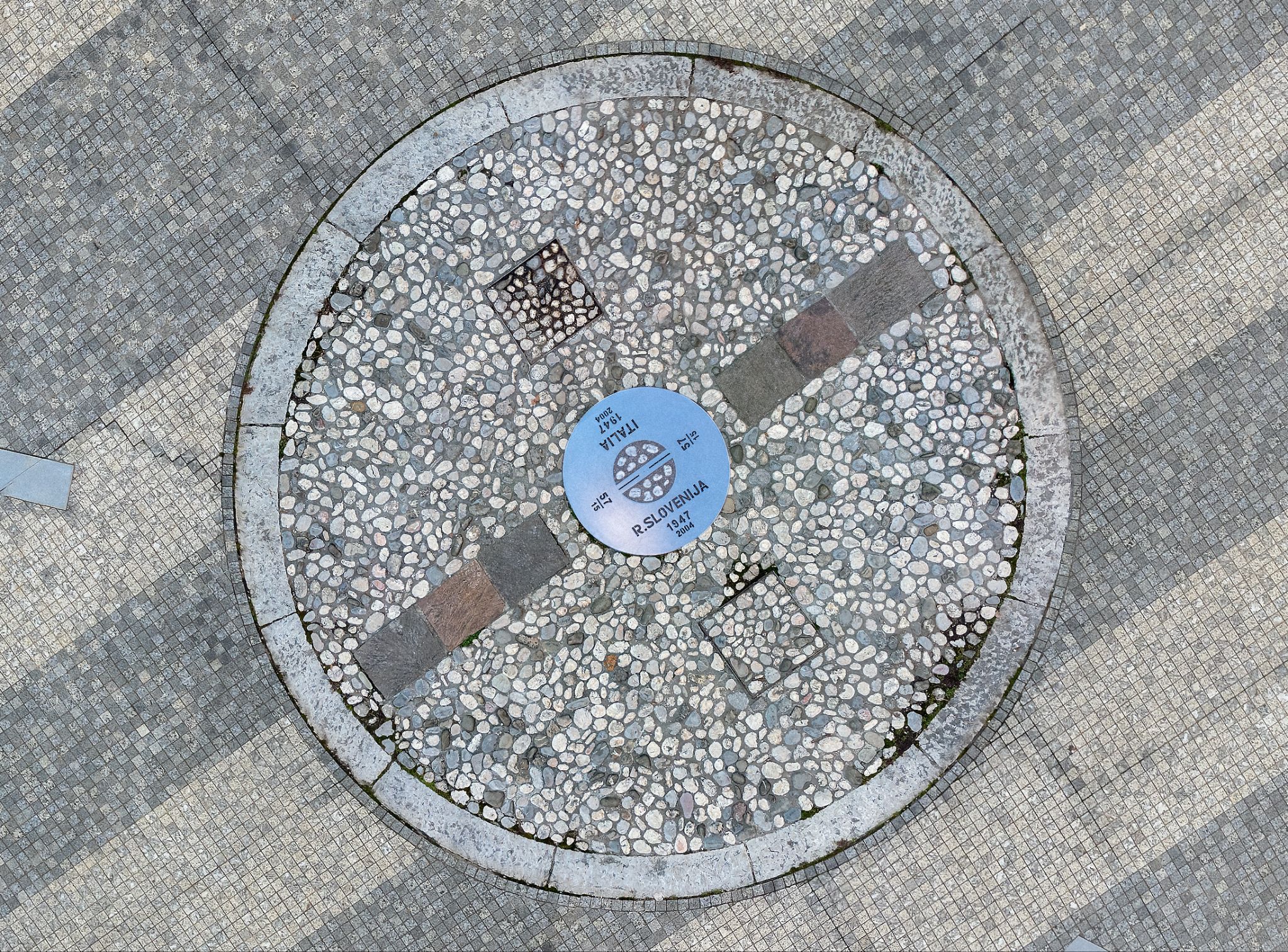
Matjaž Prešeren -Piazza Transalpina seen from above, border between Italy and Slovenia
To fully grasp the significance of this moment, one must go back in time and immerse in the roots of these two cities. In the Middle Ages, the territory was governed by the Counts of Gorizia before passing to the Habsburgs in the 15th century, who ruled it for nearly 400 years, except for a brief Napoleonic period in the early 19th century. After World War I, in 1918, Gorizia was annexed to Italy. However, it was World War II that dramatically reshaped the region: in 1947, the Paris Peace Treaty redrew the border between Italy and Yugoslavia, separating Gorizia from its surrounding territory. To compensate for the loss of its central hub, Yugoslavia decided to build a new city: Nova Gorica, founded in 1948 right next to the border. But borders cannot extinguish the desire to be together. Slowly, thanks to the perseverance of the borderland people, barriers began to crumble. When Slovenia joined the European Union in 2004, the border lost its physical weight. And today, thanks to GO!2025, it has lost its symbolic weight as well.
On the day of the inauguration, Gorizia and Nova Gorica ceased to be two cities and became one. A single, grand open-air stage where culture took history by the hand and turned it into hope. The speeches of the authorities, the words of Italian President Sergio Mattarella and Slovenian President Nataša Pirc Musar, echoed as an anthem of brotherhood.
«Just as culture unites two cities into one, culture and the idea of Europe will unite many nations into a single European family.» These words from the Prime Minister of the Republic of Slovenia, Robert Golob, swept through the crowd like a wave, making the hearts of those who knew they were experiencing a once-in-a-lifetime moment tremble.
Voices intertwined, each carrying a personal story, a shared sentiment: «I grew up with one foot on one side and one foot on the other, having the opportunity to know both the Italian and Slovenian environments.» «I was born and raised in a bicultural environment, and seeing them united moves me deeply.» «Growing up here makes me feel like a European citizen.» These were the murmurs of the people, expressions of identity and belonging, as they witnessed a moment that felt historic.
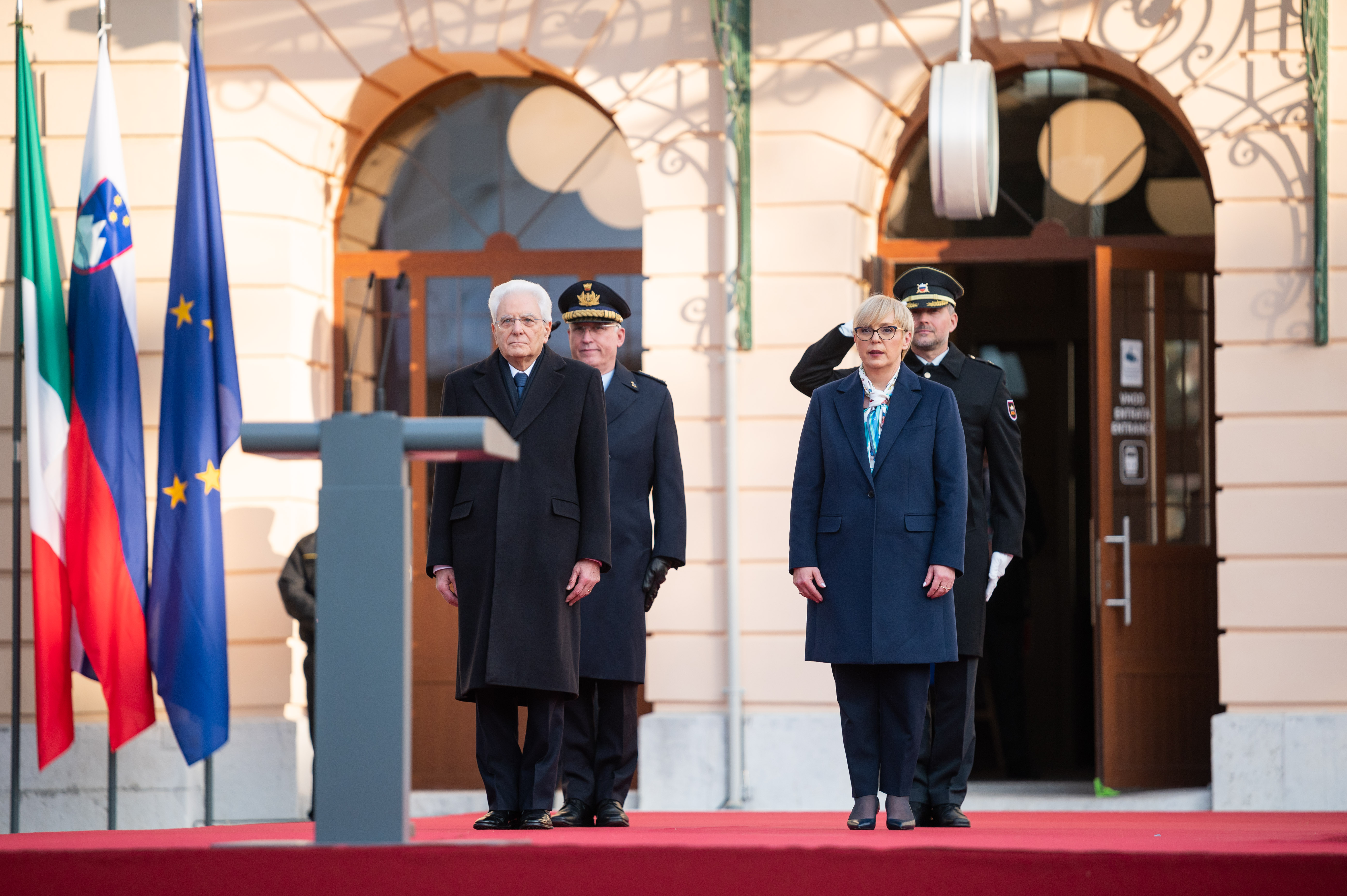
Boštjan Podlogar – Italian President Sergio Mattarella and Slovenian President Nataša Pirc Musar
©GO!2025, 2025
Then, magic became tangible. Music filled the air, and the talent of Italian and Slovenian artists took centre stage. Boštjan Gombač played the Neanderthal flute, the oldest instrument in the world taking the audience back in time, and reminding everyone that music has never known borders. The Dunking Devils left the crowd breathless with their acrobatics, while choirs sang Skupaj/Insieme (together), a song that has already become the anthem of this cultural revolution.
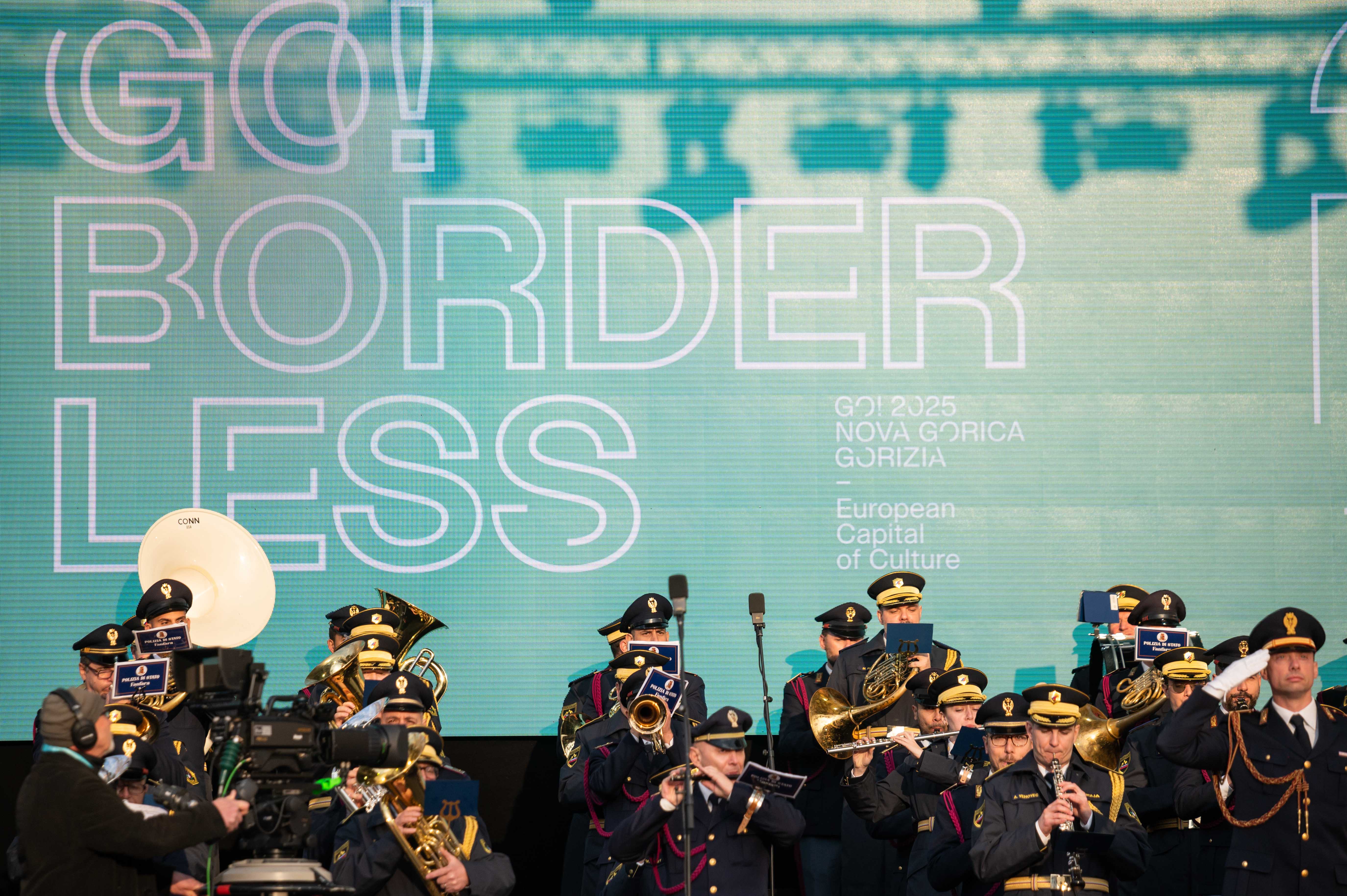
Boštjan Podlogar -performance
©GO!2025, 2025
As night fell, the former border lit up with colours and lights. The celebration came to life with the Borderless Party, a festivity without barriers, where DJs Brina Knauss and Daddy G of Massive Attack kept the crowd dancing until dawn. The sound of music blended with laughter, toasts, and the joy of being together.
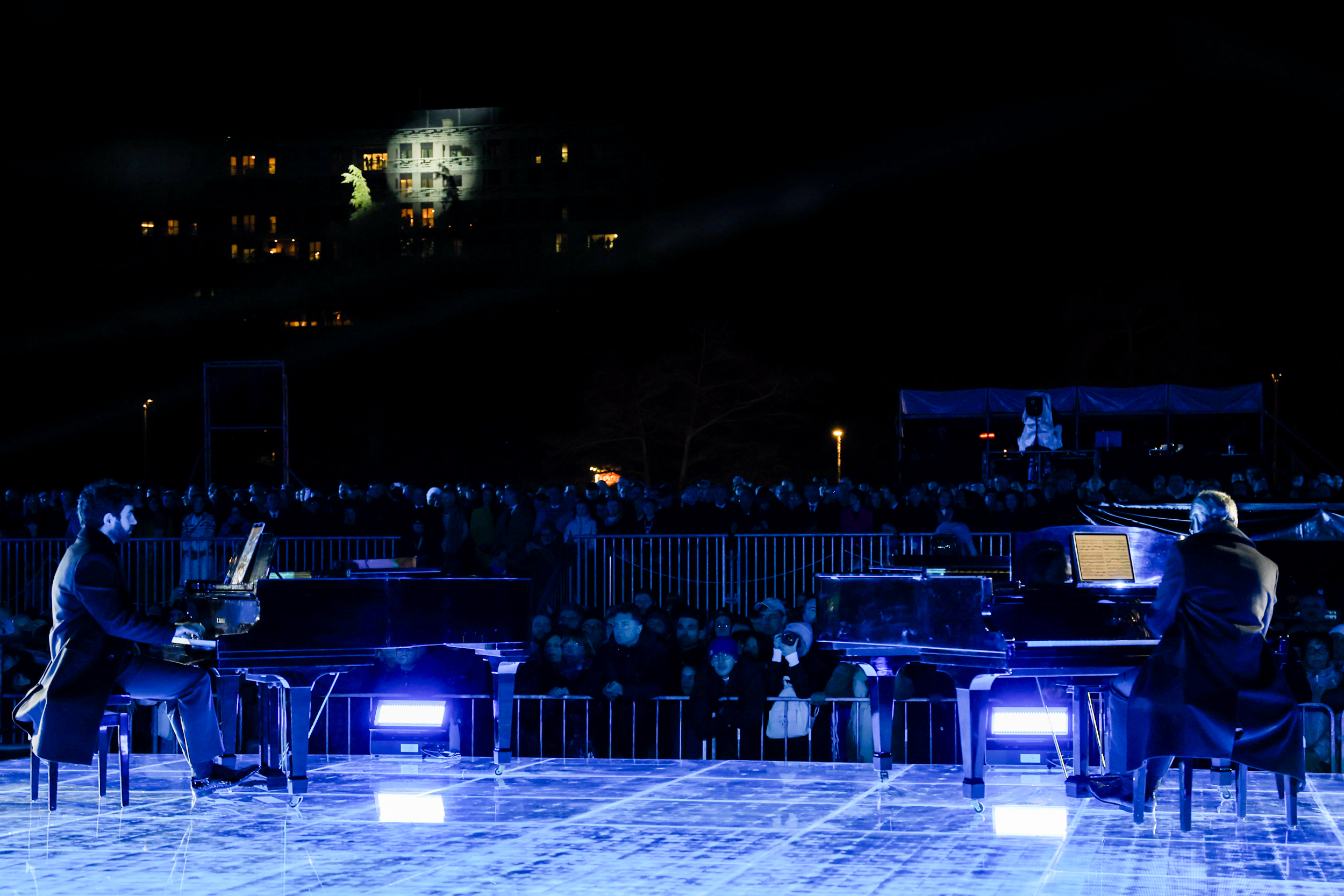
Ana Rojc -performance
©GO!2025, 2025
GO!2025 is not just a year of cultural events, it is a vision of what Europe can be: a continent without borders, a place where differences become richness, a laboratory of coexistence and collaboration.
In the coming months, Gorizia and Nova Gorica will be the beating heart of European culture. There will be performances, exhibitions, concerts, and encounters that will tell the story of these borderlands and the beauty of their rebirth. Every corner of the city will transform into a page of a book yet to be written, and every person who takes part will help tell the story.
And when someone asks, “Where do you belong?” the answer will be as simple and radiant as the lights that now illuminate the square:
«We are children of the border, but no longer separated. Because borders do not divide … borders unite.»
_______________
Young Journalists in Europe – Meet the author
Lisa Leopoli
“Empathy: the essence of who I am and the soul of everything I write.
I am a university student in Public Relations and a journalist for my city’s local newspapers. But above all, I am a «border girl.» Born and raised in Gorizia, a city where Italy and Slovenia meet, I have learned that a border is not a barrier but a bridge, an invisible bond that unites cultures, stories, and people. I believe in unity, in the power of sharing, and in the value of storytelling and communication. Today, I am here not only to recount the past and learn from it but, more importantly, to write the future together. Because we, the youth, are not just spectators of tomorrow we are the protagonists who will shape it!”
Article collaborator: Friederike Kroeger
This article reflects the views of the authors only. The European Commission and Eurodesk cannot be held responsible for it.
